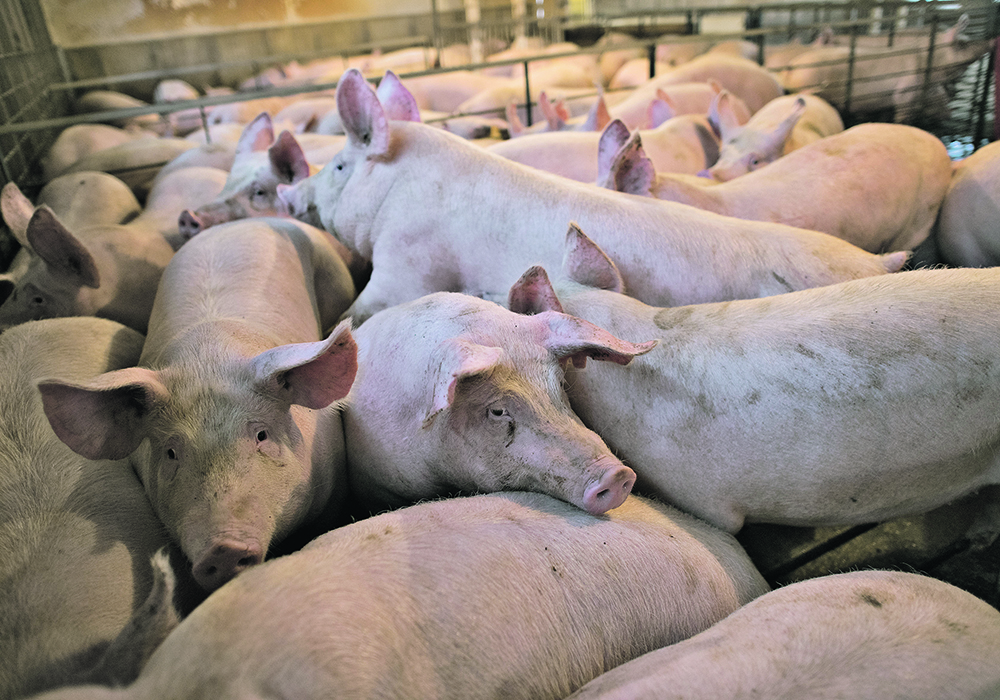Chicago hog futures climbed rapidly in recent weeks, hitting levels exceeded only during the COVID-19 peak of 2021 and the porcine epidemic diarrhea outbreak of 2014.
High prices do not guarantee high profits, and Robert Arnason’s story on page 4 this week about soaring input costs show why it is hard to make a buck raising pigs these days.
This column will explore the factors driving hog prices higher and what might happen in coming months.
Compared to the beginning of January, the April Chicago hogs contract was up 24 percent as of Feb. 17.
Read Also

Pakistan reopens its doors to Canadian canola
Pakistan reopens its doors to Canadian canola after a three-year hiatus.
Supply of market hogs in Canada and the United States is smaller than expected and packers are having to pay up to get inventory.
The U.S. December hogs and pigs report signalled tighter supplies in the new year, but it seems traders did not believe it until confirmed by actual slaughter numbers.
The U.S. inventory of pigs 180 pounds and heavier on Dec. 1 was down six percent and the group 120-179 lb. was down 6.2 percent. Those hogs would be slaughtered in the first months of the new year.
The numbers were more bullish than expected and yet reaction was muted until slaughter numbers dropped.
In the U.S., federally inspected hog slaughter to Feb. 5 was running 8.9 percent behind the same time last year.
In Canada federal slaughter was running 8.8 percent behind last year’s pace.
The slower slaughter might be partly due to workers being off with COVID, but carcass weights are not rising, indicating the supply chain is not backing up. There simply are not enough hogs.
Tight supply will continue into spring and early summer, traditionally the strongest demand season for pork.
The U.S. Department of Agriculture hogs and pigs report showed 50-119 lb. pigs were down three percent from the year earlier and those less than 50 lb. were four percent down.
Jim Long, president and chief executive officer of Genesus Inc., noted in his weekly report that the USDA’s report revised down its earlier estimates of the number of sows in the U.S. breeding herd and the number of sows that would be farrowed.
This meant that the number of pigs born in 2021 were fewer than originally forecast.
Long suggests that the USDA is still over-estimating sow numbers, implying the supply of market pigs currently projected is also likely too high.
The supply situation will not be resolved quickly.
Arnason’s story lays out how high feed prices, rising energy bills and expensive animal health costs are offsetting the high prices that would normally encourage increased production.
Profits and productivity are also capped by disease pressure from a new round of PED, the particularly pathogenic strain porcine reproductive and respiratory syndrome 1-4-4 and by Actinobacillus pleuropneumoniae.
Labour shortages also curtail the ability to expand, and Long also suspects a shortage of experienced pig workers is making it harder to control disease.
Packers will raise their bids for hogs if they can maintain margins by pushing pork prices higher.
And that is easier to do if pork is perceived as good value compared to competing meats. It’s clear pork is cheaper than beef.
Pork prices are also influenced by demand from the export market.
American and Canadian pork exports have fallen off in the last six months mostly because of China.
In 2020, China’s pork imports exploded higher, but in 2021 Canadian pork exports to that country were down 53 percent by value and U.S. exports were down 46 percent.
But both countries were able to find other buyers to fill the gap and the total value U.S. pork exports for 2021 rose three percent, while Canada’s slipped by only 2.75 percent.
China’s role in the pork trade this year is uncertain.
Its pig herd recovered from African swine fever and it is now producing such a surplus of pork that its price is 55 percent lower than last year at this time.
The price is so low it triggered a government pork buying program to support producers and to build up the national stockpile of the meat.
Chinese producers have lost money for months and are likely cutting the number of pigs they will produce. That might result in a need for more imported pork in the second half of this year, but that might be offset if the government’s stockpiling exercise is aggressive.
European and Brazilian hog producers are also losing money and are liquidating herds. European producers are also encountering more cases of African swine fever.
All this implies reduced global supply of market hogs in the second half of this year or perhaps 2023.
That should help support hog prices, but producer profits will depend much on whether feed grain production recovers and whether swine diseases can be controlled.















